1. Use as a cooking oil for frying vegetables or meats.
First, render the suet into tallow as described above. Tallow has a milder flavor and a very high smoke point, making it a great fat for frying at a high temperature. You can use the tallow right away or freeze it in ice cube trays so it will be ready to pull out of the freezer any time. Render multiple times, allowing the fat to re-solidify and scraping off any impurities on the bottom for a mild flavor.
2. Craft time – Make a birdfeeder
First, render the suet into tallow as described above. When melted, mix in whatever bird food-like ingredients you have on hand – nuts, dried fruits, birdseed, peanut butter, etc. Pour the mixture into the cups of a muffin tin and insert the end of a piece of twine or string into each cup (the twine will be what you use to tie the suet to your tree). The tallow will cool and harden; once it is hard, remove it from the pan and feed your birds! Alternatively, if you have a suet feeder, pour the hot tallow mixture into a large baking pan and when cool, cut into squares that will fit your feeder.
3. DIY – Easy soap making
Making your own soap is easy, inexpensive and ensures your soap is free of the toxic ingredients found in many commercial soaps. We highly recommend reading The Body Care Guide book to know who this is so important. Soap made with tallow has a nice creamy lather and great skin conditioning; we actually just made our first batch and are quite happy with the results.
Tools:
Ingredients:
Steps:
- Follow all safety precautions on the lye package and read emergency instructions before handling.
- Put water into a metal bowl or pot. Add the lye and stir with a metal spoon. It will be very hot (near boiling); do not touch until it cools. Set aside and let it cool to about 110 degrees.
- Weigh out your oils/fat and place into a large stockpot. Heat up to about 110 degrees.
- Line a glass pan or bread loaf with plastic food wrap. This will determine the shape of your soap. You'll need about 2 quarts of total volume.
- Get your immersion blender out and add the lye/water mixture to the stockpot with the oils while running the blender on high. Don't just dump it all in at once, but you don't need to be super slow about it. Keep mixing with the blender, trying not to whip in too much air. Stir and mix until it 'traces' or looks like the thickness of pancake batter. The idea is that when you pull the blender out and let drops fall back in, they stay on the surface for a little bit. This will take 3-6 minutes of blending.
- At this time, you can mix in 2-3 ounces of a favorite essential oil or just leave the soap unscented. Then pour the mixture into your plastic-wrapped molds. Let sit for 12-36 hours and turn out on a cutting board. Slice into your desired shapes and allow to harden for a week or two.
- To get more bubbly soap, increase the coconut and decrease the olive oil by equivalent amounts -- or for even more, add some caster oil and decrease olive oil by the amount you added of caster.

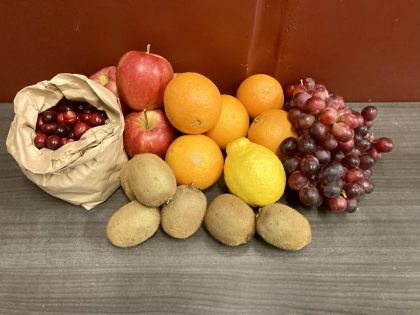
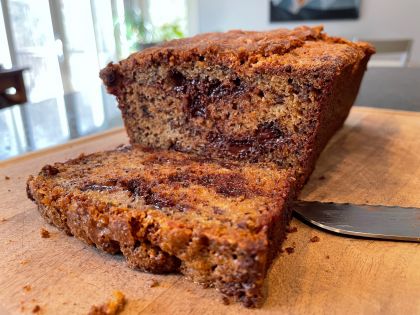

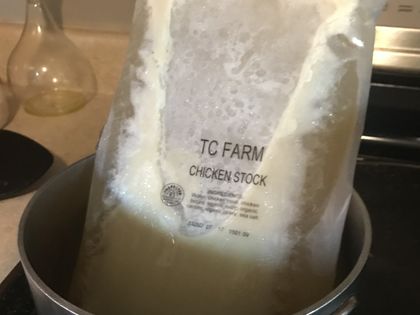

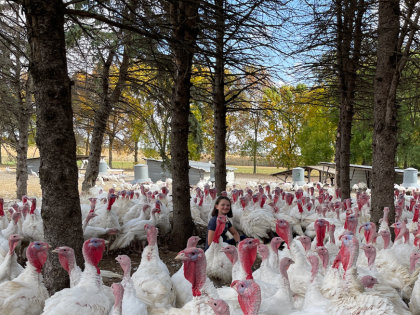
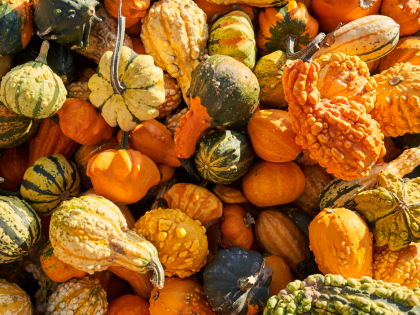

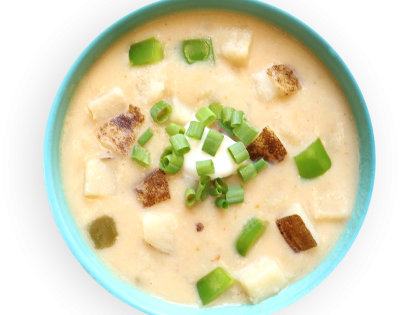
Comments (0)
Add a Comment
Add a Comment